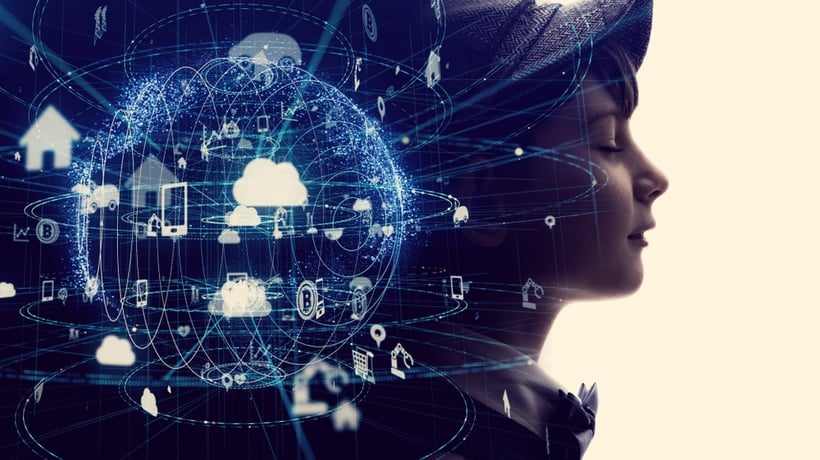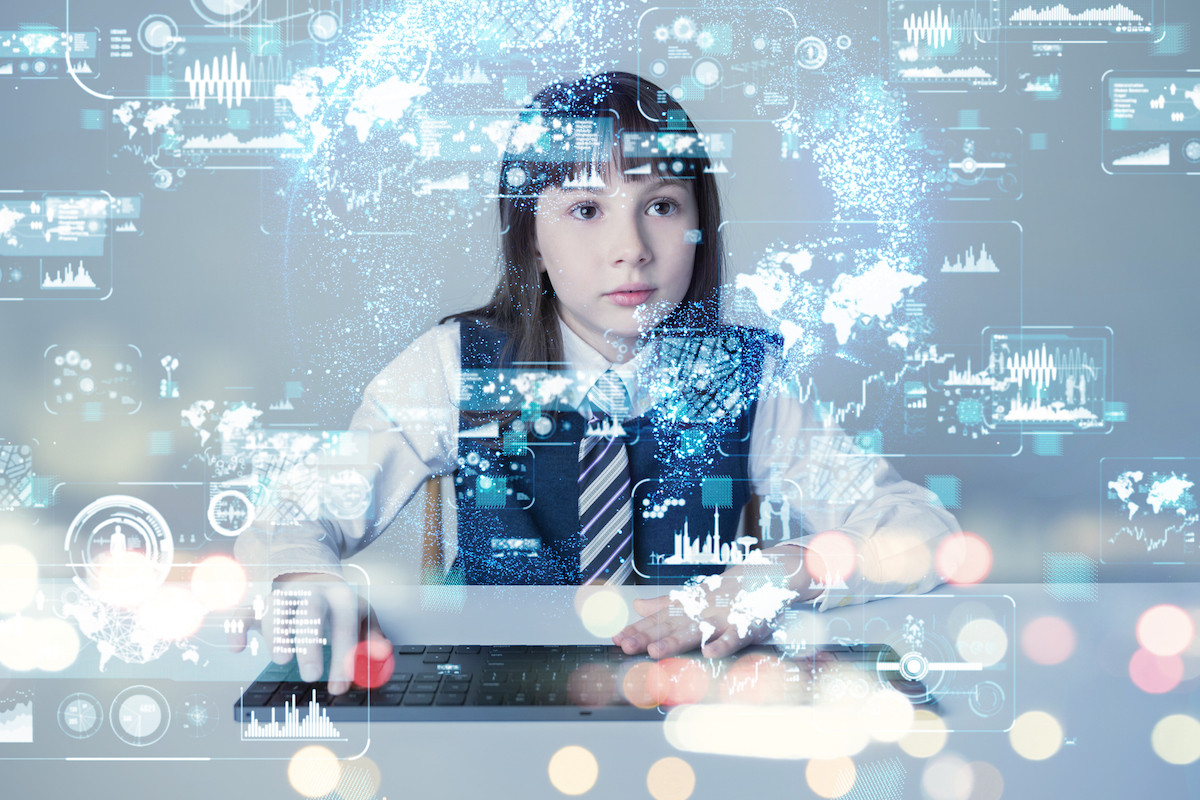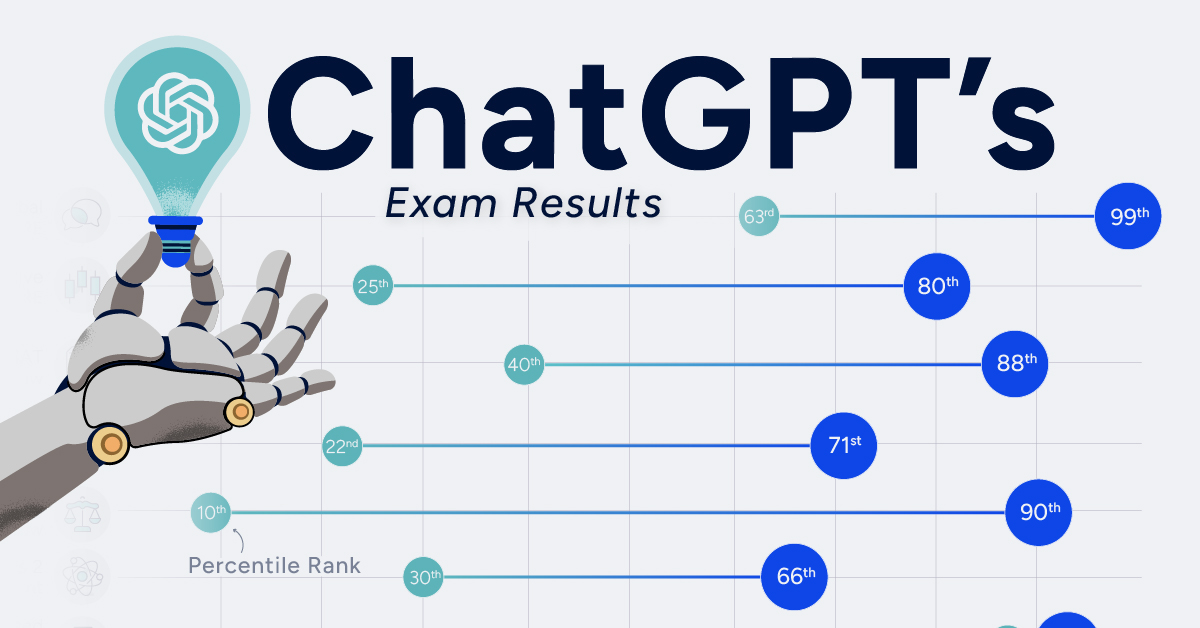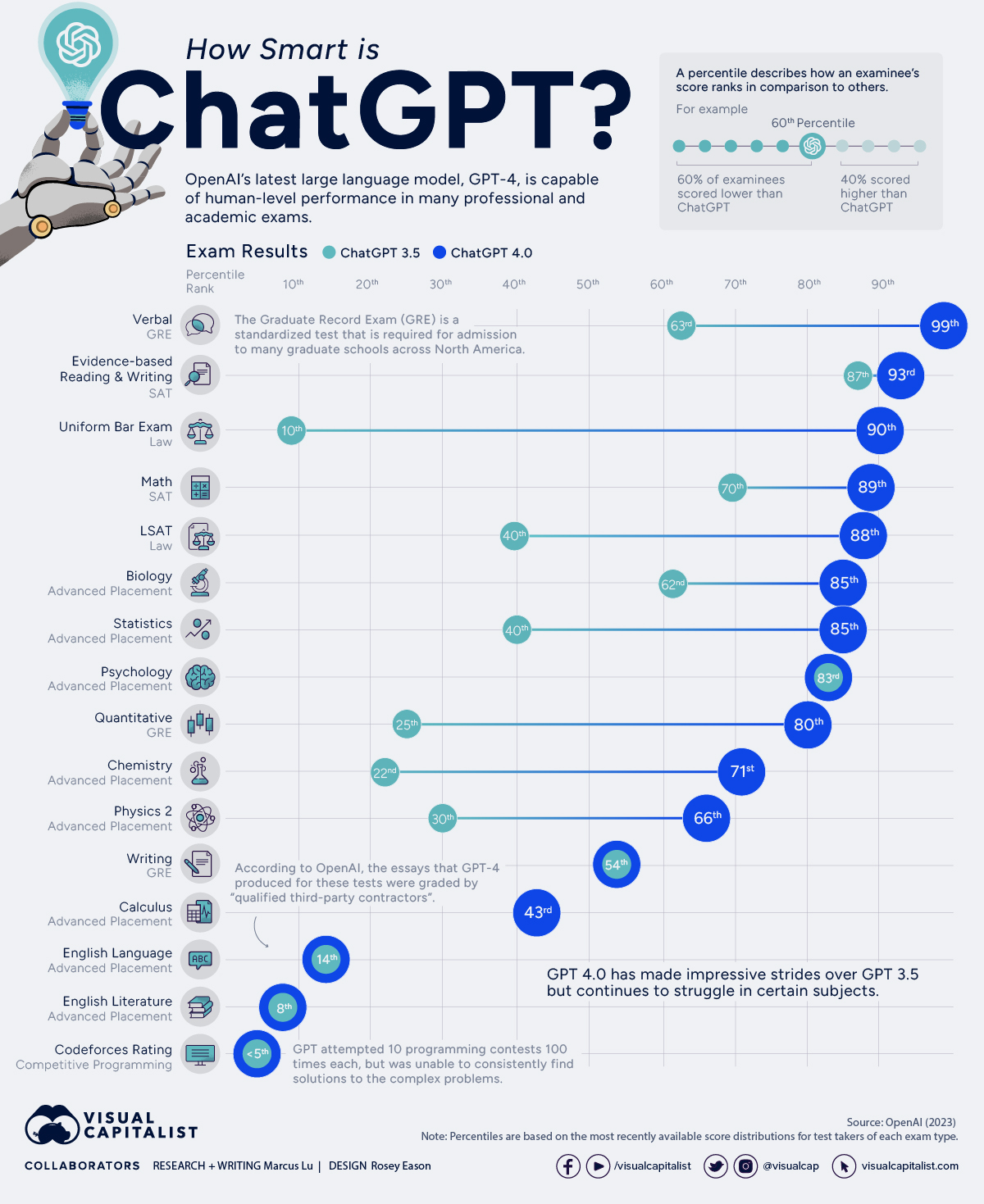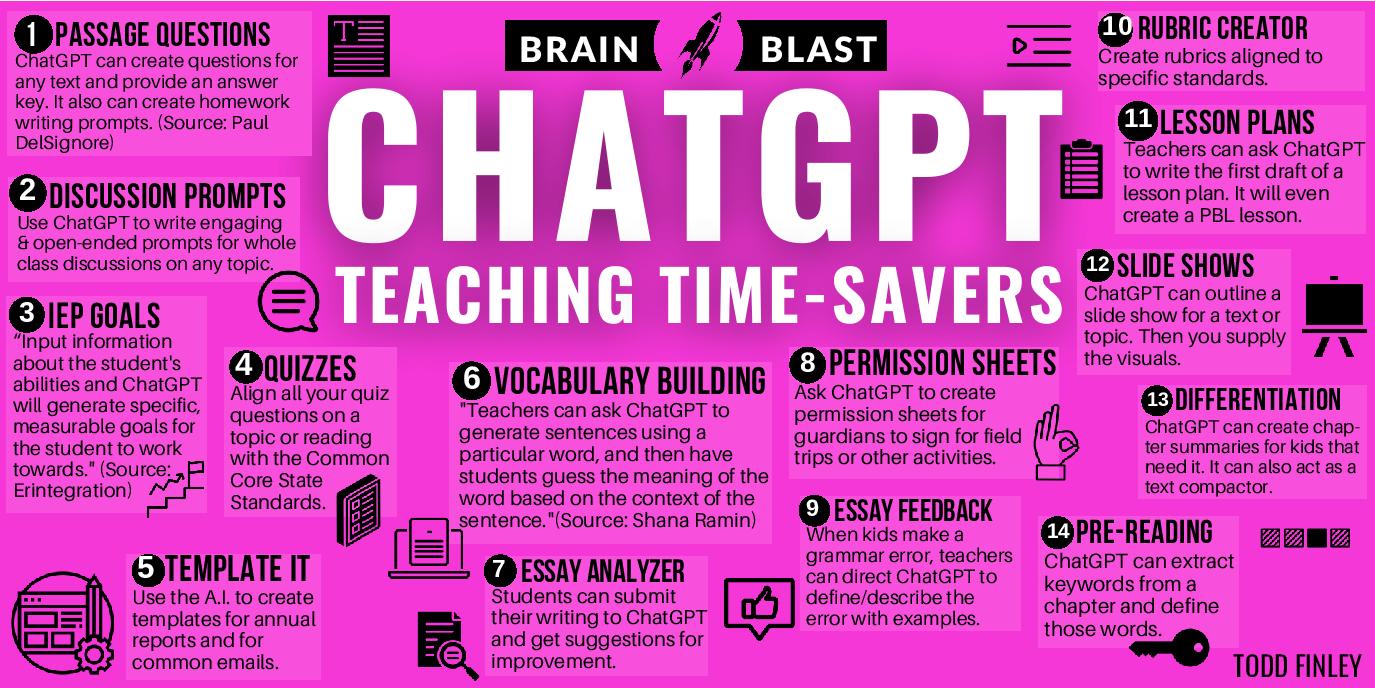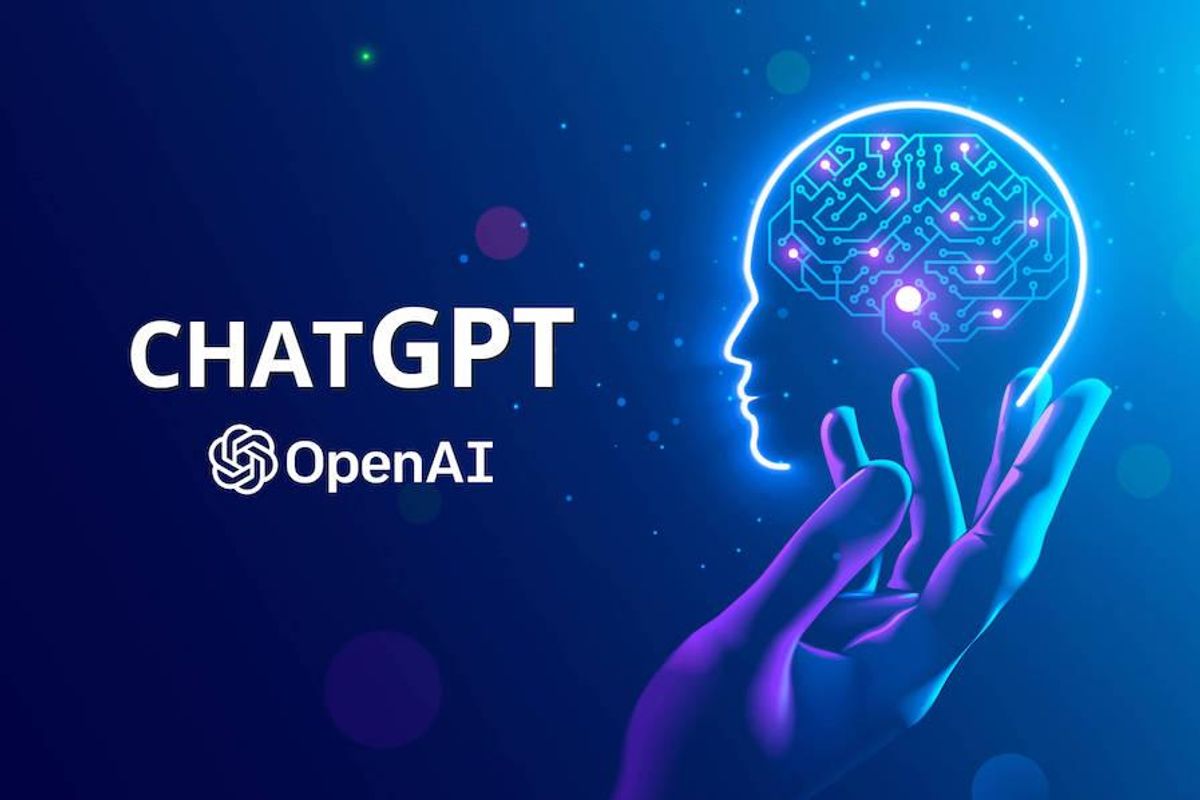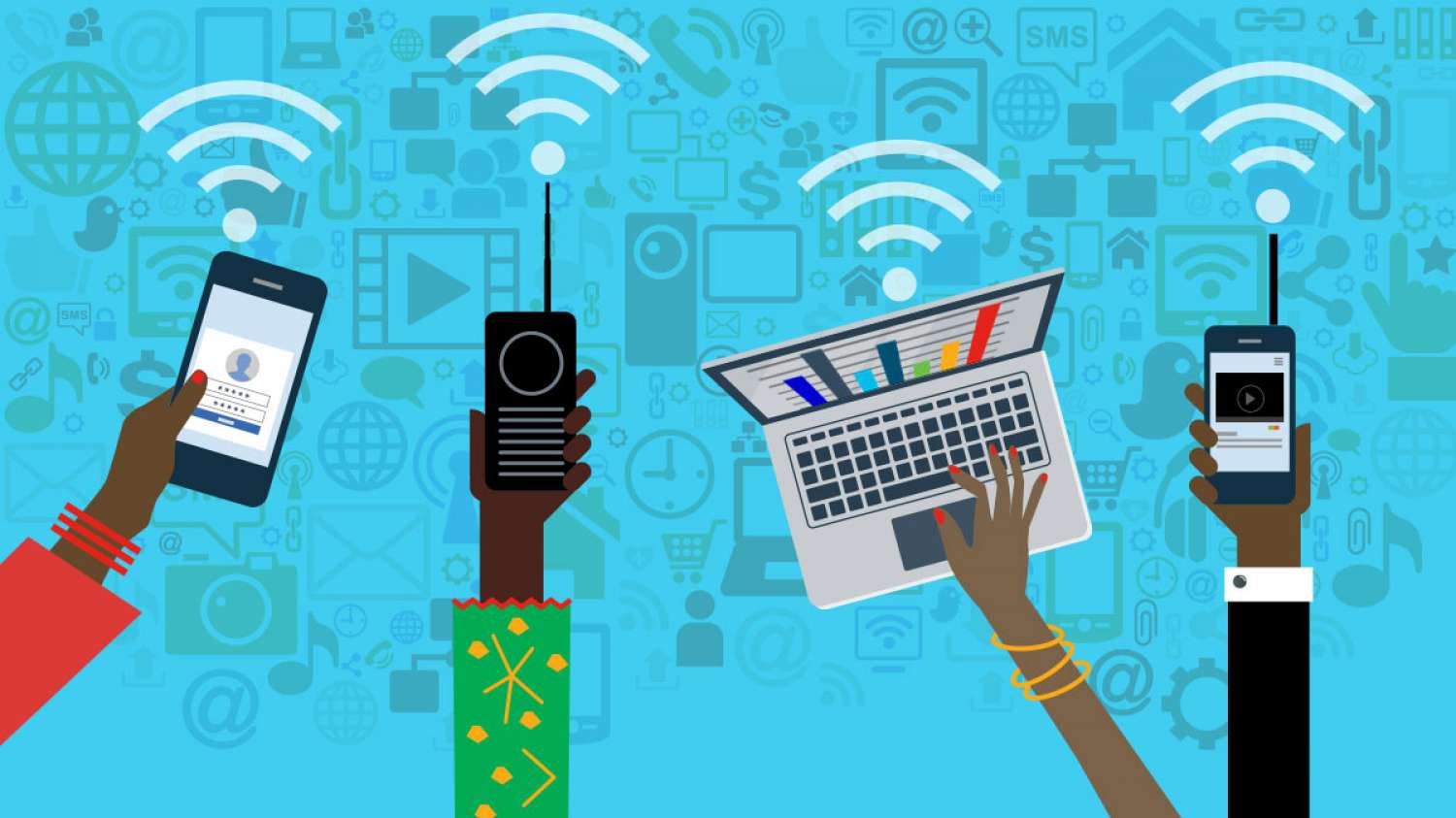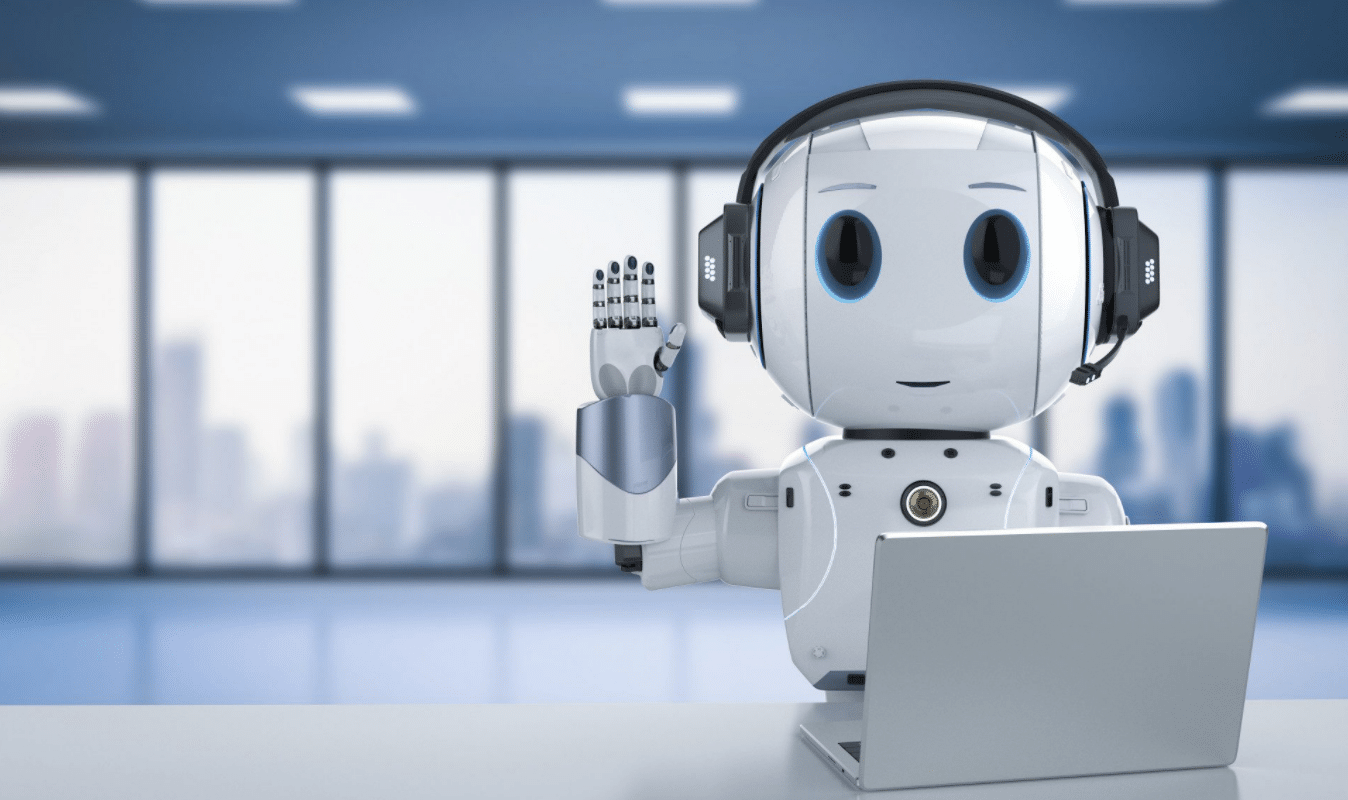Monday, May 01, 2023
ChatGPT And Conflict Resolution: Improving Interpersonal Relationships In The Workplace
ChatGPT Literacy For Corporate Teams Of All Sizes (Online Course) (Sign Up!)
1. Providing Neutral Communication
One of the biggest benefits of using ChatGPT for conflict resolution is its neutrality. ChatGPT does not have biases or emotions that can cloud judgment or escalate conflicts. By using ChatGPT as a mediator, employees can communicate their thoughts and feelings in a neutral environment, which can lead to a more productive conversation and resolution.
2. Enhancing Communication Skills
ChatGPT can also be used to enhance communication skills among employees. By providing feedback and suggestions for improving communication, ChatGPT can help employees learn how to express themselves more effectively, listen actively, and communicate with empathy. This can lead to better interpersonal relationships and a more positive work environment.
3. Providing Privacy and Anonymity
In some cases, employees may be hesitant to express their thoughts and feelings about conflicts out of fear of retaliation or judgment. ChatGPT can provide a safe and confidential space for employees to express themselves without fear of consequences. This can lead to more honest and open communication, which can lead to a better understanding of the underlying issues and more effective conflict resolution.
ChatGPT Literacy For Corporate Teams Of All Sizes (Online Course) (Sign Up!)
4. Saving Time and Resources
Traditional conflict resolution methods, such as in-person meetings or consultations with HR, can be time-consuming and resource-intensive. By using ChatGPT, conflicts can be resolved quickly and efficiently, allowing employees to focus on their work and reducing the impact of conflicts on overall productivity.
5. Offering Consistency
ChatGPT can also provide consistency in conflict resolution. By using a standardized process and approach, ChatGPT can ensure that conflicts are addressed fairly and consistently across the organization. This can help build trust and confidence in the conflict resolution process among employees.
In conclusion, ChatGPT can be a powerful tool for improving conflict resolution and interpersonal relationships in the workplace. By providing neutral communication, enhancing communication skills, providing privacy and anonymity, saving time and resources, and offering consistency, ChatGPT can help employees address conflicts more effectively and build stronger relationships. Businesses that incorporate ChatGPT into their conflict resolution processes can improve employee morale, productivity, and overall success.
ChatGPT Literacy For Corporate Teams Of All Sizes (Online Course) (Sign Up!)
Tips For Incorporating ChatGPT Literacy Training Into Employee Onboarding
ChatGPT Literacy For Corporate Teams Of All Sizes (Online Course) (Sign Up!)
1. Introduce ChatGPT Early
Introduce ChatGPT to new employees early in their onboarding process. This can be done through a presentation, training session, or informational video. Make sure to explain the benefits of ChatGPT and how it can help employees communicate more effectively in their roles.
2. Provide Hands-On Training
Provide hands-on training to help employees become comfortable using ChatGPT. This can be done through guided practice exercises, group discussions, or one-on-one coaching sessions. Encourage employees to ask questions and provide feedback throughout the training process.
3. Highlight Best Practices
Highlight best practices for using ChatGPT effectively. This may include tips for writing clearly and concisely, using appropriate tone and language, and incorporating emotional intelligence into written communication. Provide examples of effective communication using ChatGPT and encourage employees to practice these techniques in their own writing.
4. Incorporate Feedback
Incorporate feedback into ChatGPT literacy training. Encourage employees to provide feedback on their experiences using ChatGPT and incorporate this feedback into future training sessions. This can help ensure that the training is effective and relevant to employees' needs.
5. Reinforce Learning
Reinforce learning by providing ongoing support and resources for using ChatGPT effectively. This may include access to training materials, online resources, or coaching sessions. Encourage employees to continue practicing their ChatGPT literacy skills and provide opportunities for them to apply their learning in real-world situations.
In conclusion, incorporating ChatGPT literacy training into employee onboarding can help ensure that employees are equipped with the skills they need to communicate effectively in their roles. By introducing ChatGPT early, providing hands-on training, highlighting best practices, incorporating feedback, and reinforcing learning, businesses can help employees become confident and proficient in using this AI-powered language model. This can lead to greater employee engagement, productivity, and success for the business.
ChatGPT Literacy For Corporate Teams Of All Sizes (Online Course) (Sign Up!)
ChatGPT For Leadership Development: Empowering Managers To Communicate Effectively
ChatGPT Literacy For Corporate Teams Of All Sizes (Online Course) (Sign Up!)
1. Writing Assistance
Managers are often tasked with communicating complex ideas to a variety of audiences. ChatGPT can help managers communicate more effectively by suggesting language that is clear, concise, and persuasive. Whether they're writing an email, a memo, or a presentation, ChatGPT can provide real-time feedback and suggestions that help managers communicate their ideas more effectively.
2. Coaching
Coaching is a critical component of leadership development. ChatGPT can provide coaching in real-time, helping managers improve their communication skills as they write. For example, ChatGPT can suggest ways to improve sentence structure, clarify language, or emphasize key points. This can help managers become more confident and effective communicators over time.
3. Personalization
Every manager has their own unique communication style. ChatGPT can learn from a manager's writing and communication style, providing personalized suggestions that align with their preferences and goals. This can help managers communicate more effectively and authentically, without sacrificing their own personal style.
4. Consistency
Consistency is key to effective communication. ChatGPT can help managers maintain consistency in their messaging and tone, even as they communicate with a variety of audiences. This can help build trust and credibility with employees, stakeholders, and customers, ultimately leading to greater success for the business.
ChatGPT Literacy For Corporate Teams Of All Sizes (Online Course) (Sign Up!)
5. Emotional Intelligence
Emotional intelligence is a critical component of effective leadership. ChatGPT can help managers develop their emotional intelligence by suggesting language that is empathetic and emotionally intelligent. This can help managers better understand and connect with their employees, fostering a more positive and productive work environment.
In conclusion, ChatGPT can play a crucial role in leadership development by helping managers become better communicators. By providing writing assistance, coaching, personalization, consistency, and emotional intelligence, ChatGPT can empower managers to communicate more effectively and become better leaders. By incorporating ChatGPT into their communication strategies, businesses can promote leadership development and achieve their business objectives more effectively.
ChatGPT Literacy For Corporate Teams Of All Sizes (Online Course) (Sign Up!)
ChatGPT And Diversity, Equity, And Inclusion: Fostering A More Inclusive Workplace
1. Unconscious Bias Mitigation
Unconscious bias can impact the way people communicate and make decisions, even when they are not aware of it. ChatGPT can help mitigate unconscious bias by suggesting language that is inclusive and neutral. For example, if someone writes a message that may be unintentionally exclusionary, ChatGPT can suggest alternative language that is more inclusive and avoids stereotypes.
2. Multilingual Communication
The ability to communicate effectively with colleagues and clients from diverse linguistic backgrounds is critical in today's globalized economy. ChatGPT can help businesses communicate more effectively across language barriers by providing real-time translation services. This can help break down linguistic barriers and promote cross-cultural understanding and collaboration.
3. Inclusive Language Suggestions
Inclusive language is a crucial component of DEI. ChatGPT can help businesses promote inclusive language by suggesting alternative words and phrases that are more inclusive and less likely to be offensive or exclusionary. For example, ChatGPT can suggest alternative language when gendered pronouns are used, making it easier for employees to communicate in a more inclusive way.
4. Accessible Communication
Accessibility is another critical aspect of DEI. ChatGPT can help businesses promote accessibility by suggesting language and responses that are easy to understand and inclusive of employees with disabilities. This can help create a more welcoming and inclusive environment for all employees.
5. Emotional Intelligence
Emotional intelligence is the ability to recognize and understand one's own emotions and the emotions of others. ChatGPT can help businesses promote emotional intelligence by suggesting language and responses that are empathetic and emotionally intelligent. This can help employees feel more understood and supported, fostering a more positive and inclusive work environment.
In conclusion, ChatGPT can play a crucial role in promoting DEI in the workplace. By mitigating unconscious bias, providing multilingual communication, suggesting inclusive language, promoting accessibility, and fostering emotional intelligence, ChatGPT can help businesses create a more welcoming and inclusive environment for all employees. By incorporating ChatGPT into their communication strategies, businesses can promote diversity, equity, and inclusion and create a more productive and successful workplace.
The Impact Of ChatGPT On Employee Engagement And Retention
1. Personalized Communication
Personalized communication is essential for engaging employees and making them feel valued. ChatGPT can help businesses create personalized communication by suggesting language and responses that show empathy, interest, and understanding. This can lead to a more positive employee experience and higher levels of engagement.
2. Effective Onboarding
Effective onboarding is essential for retaining new employees and helping them become productive team members quickly. ChatGPT can help businesses create effective onboarding programs by suggesting language and responses that provide clear guidance and support. This can help new employees feel more confident and engaged in their new roles.
3. Timely Feedback
Timely feedback is essential for employee growth and development. ChatGPT can help businesses provide timely feedback by suggesting language and responses that are clear, concise, and actionable. This can help employees feel more engaged and motivated to improve their performance.
4. Improved Training
Effective training is essential for employee development and retention. ChatGPT can help businesses create effective training programs by suggesting language and responses that are engaging, informative, and easy to understand. This can help employees feel more confident and empowered in their roles.
5. Better Communication
Effective communication is the foundation of any successful team. ChatGPT can help businesses improve communication by suggesting language and responses that are clear, concise, and engaging. This can help employees feel more connected to the team and the company, leading to higher levels of engagement and retention.
6. Enhanced Problem-Solving
Effective problem-solving is essential for any business to succeed. ChatGPT can help businesses enhance problem-solving by suggesting language and responses that encourage creativity, collaboration, and innovation. This can help employees feel more engaged and empowered to solve problems and make a positive impact on the company.
In conclusion, ChatGPT can have a significant impact on employee engagement and retention. By providing personalized communication, effective onboarding, timely feedback, improved training, better communication, and enhanced problem-solving, ChatGPT can help businesses create a more positive and engaging work environment. By incorporating ChatGPT into their communication strategies, businesses can improve employee engagement and retention, leading to greater productivity, job satisfaction, and business success.
ChatGPT And Business Writing: Tips For Effective Corporate Communication
ChatGPT Literacy For Corporate Teams Of All Sizes (Online Course) (Sign Up!)
1. Use Clear and Concise Language
Clear and concise language is essential for effective communication. ChatGPT can help businesses achieve this by suggesting simpler, more straightforward words and sentence structures. This helps to avoid misinterpretations and makes the message more accessible to a broader audience.
2. Avoid Jargon and Technical Terms
Jargon and technical terms can be confusing for people who are not familiar with the field. ChatGPT can help businesses avoid this issue by suggesting alternative terms or explanations that are easier to understand.
3. Use Active Voice
Using active voice in writing is essential for clear and concise communication. ChatGPT can help businesses identify and correct instances of passive voice in their writing, which can make the message more engaging and easier to understand.
4. Ensure Correct Grammar and Spelling
Correct grammar and spelling are crucial for effective communication, as mistakes can undermine the credibility of the message. ChatGPT can help businesses identify and correct grammar and spelling errors in their writing, ensuring that the message is conveyed accurately and professionally.
ChatGPT Literacy For Corporate Teams Of All Sizes (Online Course) (Sign Up!)
5. Use Personalization
Personalization can make the message more engaging and help establish a connection with the audience. ChatGPT can suggest personalized greetings or introductions, helping businesses to establish a relationship with their customers or employees.
6. Provide Clear Calls-to-Action
Clear calls-to-action are essential for effective communication, as they help to guide the reader towards a specific outcome. ChatGPT can help businesses create effective calls-to-action by suggesting specific language and formats that are more likely to drive action.
In conclusion, ChatGPT can help businesses improve their writing skills and create more effective corporate communication. By using clear and concise language, avoiding jargon and technical terms, using active voice, ensuring correct grammar and spelling, personalizing messages, and providing clear calls-to-action, businesses can communicate their message more effectively and establish a stronger connection with their audience. By incorporating ChatGPT into their writing process, businesses can improve their writing skills and create more effective communication that drives results.
ChatGPT Literacy For Corporate Teams Of All Sizes (Online Course) (Sign Up!)
How ChatGPT Can Improve Team Collaboration and Productivity
ChatGPT is an AI-powered chatbot that can understand and respond to human language in a way that is almost indistinguishable from human communication. It can be trained to perform a wide range of tasks, from answering customer inquiries to generating reports or scheduling meetings. In this blog post, we will explore how ChatGPT can help improve team collaboration and productivity.
ChatGPT Literacy For Corporate Teams Of All Sizes (Online Course) (Sign Up!)
1. Real-time Communication
ChatGPT provides real-time communication that is essential for effective team collaboration. Team members can communicate with each other instantly, share ideas and feedback, and coordinate their efforts more efficiently.
2. Improved Transparency
ChatGPT can improve transparency by providing instant updates on the progress of ongoing projects. Team members can see what other team members are working on, enabling them to identify and resolve issues in real-time.
3. Enhanced Task Management
ChatGPT can enhance task management by providing automated reminders and notifications for upcoming deadlines. This helps team members stay on top of their tasks and ensures that projects are completed on time.
4. Customizable Solutions
ChatGPT can be customized to meet the specific needs of individual teams. For example, it can be programmed to provide specific information or automate tasks that are unique to a particular team or project.
ChatGPT Literacy For Corporate Teams Of All Sizes (Online Course) (Sign Up!)
5. Language Translation
ChatGPT can also help improve team collaboration in international teams by providing instant language translation. This can help bridge communication gaps and improve understanding between team members who speak different languages.
6. Efficient Meeting Scheduling
ChatGPT can streamline meeting scheduling by automatically suggesting meeting times that work for all team members. This saves time and eliminates the need for back-and-forth communication to find a suitable meeting time.
7. Increased Productivity
ChatGPT can increase productivity by automating routine tasks, freeing up team members' time for more complex and creative work. This can help reduce burnout and improve job satisfaction, leading to better overall performance.
ChatGPT Literacy For Corporate Teams Of All Sizes (Online Course) (Sign Up!)
In conclusion, ChatGPT is transforming team collaboration and productivity in a variety of ways. From real-time communication and improved transparency to enhanced task management and efficient meeting scheduling, ChatGPT offers a range of benefits for teams of all sizes. By utilizing this powerful tool, teams can streamline communication, save time and increase efficiency, leading to greater collaboration and productivity.
Enhancing Communication Skills In The Workplace With ChatGPT
ChatGPT is an AI-powered chatbot that can understand and respond to human language in a way that is almost indistinguishable from human communication. It can be trained to perform a wide range of tasks, from answering customer inquiries to generating reports or scheduling meetings. In this blog post, we will explore how ChatGPT can help enhance communication skills in the workplace.
1. Improved Clarity and Accuracy
ChatGPT can significantly improve the clarity and accuracy of communication in the workplace. Misunderstandings can be costly and time-consuming, but ChatGPT can provide instant responses that are clear and accurate, reducing the risk of miscommunication.
2. Enhanced Customer Service
ChatGPT can also enhance customer service by providing 24/7 support. Traditional customer support channels are limited by business hours, but ChatGPT can be available around the clock to provide assistance to customers. This ensures that customers' questions and concerns are addressed promptly, leading to higher customer satisfaction.
3. Time-Saving
ChatGPT can save employees valuable time by handling routine tasks such as answering basic inquiries or scheduling meetings. This frees up staff time for more complex work, improving productivity across the organization.
4. Personalization
ChatGPT can personalize communication with customers and employees. It can analyze past communication to understand preferences and interests and tailor future interactions to fit individual needs. This can enhance the customer experience and increase engagement across the organization.
5. Language Learning
ChatGPT can also help employees improve their language skills. It can provide instant feedback on grammar and vocabulary, allowing employees to practice and improve their language skills in real-time. This can be especially helpful for employees who work in international teams or with non-native English speakers.
6. Data Analytics
ChatGPT can be a valuable tool for data analytics. It can collect and analyze data on customer interactions and provide insights into customer behavior and preferences. This information can be used to improve products and services, develop more effective marketing strategies, and enhance the overall customer experience.
7. Cost-Effective Communication
ChatGPT can be a cost-effective communication tool. Automated chatbots can handle many routine tasks, such as customer inquiries or administrative tasks, reducing staffing costs and increasing efficiency across the organization.
In conclusion, ChatGPT is transforming communication in the workplace in a variety of ways. From improving clarity and accuracy to enhancing customer service and language learning, ChatGPT offers a range of benefits for businesses of all sizes. By utilizing this powerful tool, businesses can streamline communication, save time and money, and improve overall productivity and customer satisfaction.
The Role of ChatGPT In Modern Corporate Communication
ChatGPT is a powerful tool that can understand and respond to human language in a way that is almost indistinguishable from human communication. It can be trained to perform a wide range of tasks, from answering customer inquiries to generating reports or scheduling meetings. In this blog post, we will explore the role of ChatGPT in modern corporate communication.
ChatGPT Literacy For Corporate Teams Of All Sizes (Online Course) (Sign Up!)
1. Improved Efficiency
ChatGPT can significantly improve communication efficiency in the workplace. Traditional communication channels such as email and phone calls can be time-consuming and prone to miscommunication. ChatGPT, on the other hand, can provide instant responses, making it much faster and more efficient to communicate. This can save employees valuable time and increase productivity across the organization.
2. 24/7 Availability
Another significant advantage of ChatGPT is its ability to provide 24/7 support. Traditional customer support channels are limited by business hours, but ChatGPT can be available around the clock to provide assistance to customers. This ensures that customers' questions and concerns are addressed promptly, leading to higher customer satisfaction.
3. Personalized Communication
ChatGPT can also personalize communication with customers, employees, and stakeholders. It can analyze past communication to understand preferences and interests and tailor future interactions to fit individual needs. This can enhance the customer experience and increase engagement across the organization.
4. Data Analytics
ChatGPT can be a valuable tool for data analytics. It can collect and analyze data on customer interactions and provide insights into customer behavior and preferences. This information can be used to improve products and services, develop more effective marketing strategies, and enhance the overall customer experience.
ChatGPT Literacy For Corporate Teams Of All Sizes (Online Course) (Sign Up!)
5. Cost-Effective Communication
ChatGPT can also be a cost-effective communication tool. Automated chatbots can handle many routine tasks, such as customer inquiries or administrative tasks, freeing up staff time for more complex work. This can reduce staffing costs and increase efficiency across the organization.
6. Flexibility
ChatGPT is also flexible and can be used in a variety of contexts. It can be integrated into a range of communication channels, including websites, messaging apps, and social media platforms. This allows businesses to reach customers and employees through their preferred channels, improving engagement and communication effectiveness.
7. Innovation
Finally, ChatGPT can drive innovation within organizations. It can be used to generate ideas and solutions quickly and efficiently, enabling employees to collaborate and innovate in real-time. This can lead to more creative problem-solving, increased efficiency, and improved outcomes.
ChatGPT Literacy For Corporate Teams Of All Sizes (Online Course) (Sign Up!)
In conclusion, ChatGPT is transforming corporate communication in a variety of ways. From improving efficiency to providing personalized communication and data analytics, ChatGPT offers a range of benefits for businesses of all sizes. As technology continues to evolve, businesses that prioritize ChatGPT will be better equipped to stay competitive and provide outstanding customer service.
Sunday, April 30, 2023
30: ChatGPT
Some things are abundant, others are not.
— Richard Behiel (@RBehiel) April 30, 2023
Notably lacking in the US: healthcare, housing, and quality education.
~6 billion people disagree with you.
— Martin (@mbrochh) April 30, 2023
The coming depression and world war will serve as a slight drag to your optimism but it’s good to have dreams.
— Jason (@JDog969) April 30, 2023
Imagine you have to choose, for your 16-hour flight from China to the US, one of these two situations:
— Sree Sreenivasan 谢斯睿 (@sree) April 30, 2023
1. No wifi.
2. No recline.
Which would you pick?
Well, I was lucky enough to get BOTH! 🤦🏾♂️
Thanks, China Southern Airlines! pic.twitter.com/Ou1pFdhHxN
600 person indoor event in Texas
— How to Make Friends (@nickgraynews) April 30, 2023
0 persons wearing masks ✅
is COVID-19 finally over? 3 years later
If it had stopped here, NYC would look like a European city. https://t.co/TJSHwp58hG
— Paul Graham (@paulg) April 30, 2023
Being rich is a silly goal.
— Justin Welsh (@thejustinwelsh) April 30, 2023
Your goal should be the freedom to focus on work you truly enjoy.
The easiest way to do that is to invest in yourself, invest in a tight network of peers, and build valuable content and assets.
All of those things compound towards a more free life.
@SusanShirk1 provides clear diagnosis and pragmatic suggestions, urging Beijing and Washington to move beyond overreach and overreaction to lower risk in relationship.
— Ryan Hass (@ryanl_hass) April 30, 2023
As risks in relationship grow, so too will sensible voices such as Susan’s. https://t.co/sZWAoDWsRo
The inevitability of LLMs means we are all bottlenecked by the bandwidth textboxes and typing offer.
— Delip Rao 🥭 (@deliprao) April 30, 2023
Billion dollar question: How do we escape the textbox?
Speech is not the answer.
AI first thinker.
— Robert Scoble (@Scobleizer) April 30, 2023
If the AI makes something up about you run with it! https://t.co/wZ5QJ68eCw
Just loaded a 10,000 row dataset into the OpenAI Code Interpreter and did what I would describe as a “casual data analysis” beyond my wildest dreams by “talking to the data.” Would have taken me days to write in Python. Mind blown on the daily right now. 🤯
— Dave Morin (@davemorin) April 30, 2023
Share what else has blown your mind about ChatGPT.
— Paramendra Kumar Bhagat (@paramendra) April 30, 2023
Early 2023: “LLMs will disrupt search!”
— Benedict Evans (@benedictevans) April 30, 2023
Spring 2023: search is probably the only thing that you can’t use an LLM for.
My first PhD student, a brilliant mathematician/software engineer had this astute observation “It is interesting that every time I want to find some answers to some niche questions, google results are irrelevant, and ChatGPT results are fictitious. https://t.co/yMunHvJ7NG
— Vishal Misra (@vishalmisra) March 22, 2023
I had this problem when using lesser-known libraries with copilot. Copilot was completely useless for packages which aren't commonly found in GitHub repositories.
— Vish (@__vishwanath__) March 22, 2023
LLMs' truthfulness problem isn't just because of hallucination. In this example it actually cited a source! What went wrong is hallucination combined with a failure to detect sarcasm and no ability to distinguish between authoritative sources and shitposts. https://t.co/wLGBnh86WI
— Arvind Narayanan (@random_walker) March 22, 2023
Generating BS.
— Paramendra Kumar Bhagat (@paramendra) April 30, 2023
Life update: Just hit 125,000 subscribers for my newsletter while exploring the coast of Hawaii.
— Rowan Cheung (@rowancheung) April 30, 2023
When I started my newsletter 4 months ago, all I had was 1,000 followers on Twitter and an unhealthy obsession for AI.
My strategy is dead simple:
1. I spend every day researching… pic.twitter.com/ZS2cliE7Hr
Also posting my end-of-April Twitter analytics here as a benchmark for the future.
— Rowan Cheung (@rowancheung) April 30, 2023
We're only just getting started! pic.twitter.com/IqQ4M9rk5i
Do you believe ChatGPT and AI are today's equivalent of the birth of the internet in 1983?
— Barsee 🐶 (@heyBarsee) April 30, 2023
I’ve been writing for 3 years now.
— Kieran Drew (@ItsKieranDrew) April 30, 2023
80 percent of my audience growth has been from the past year.
90 percent of my newsletter growth has been from the past year.
100 percent of my revenue has been from the past year.
Imagine if I gave up at the 2 year mark.
Keep going.
Every Tesla I’ve owned since 2019. I suppose I have a little bit of a problem. How many have you had so far? pic.twitter.com/pLt9sNUsC2
— Jeremy Judkins (@jeremyjudkins_) April 30, 2023
never underestimate the power of a smile 🙂
— YouTube (@YouTube) April 30, 2023
I think a lot about this panel I was on with the CEO of TurnItIn. You can watch the segment (listen for the gasp).
— Ethan Mollick (@emollick) April 30, 2023
He says how he thinks, thanks to AI, he will only need 20% of his engineers & marketers in 18 months. And he can hire them from high school.https://t.co/ED19D9OPRc
Has one man ever been so wrong about everything, all the time, for decades? pic.twitter.com/AnkwTC9uec
— David Patrikarakos (@dpatrikarakos) April 30, 2023
NEWS: @elonmusk is hopeful SpaceX can get 4-5 Starship launches this year.
— Sawyer Merritt (@SawyerMerritt) April 29, 2023
"I'll be surprised if we don't get to orbit this year, & I think there's close to a 100% chance Starship will reach orbit within 12 months."
Elon expects SpaceX to spend ~$2B on Starship in 2023. pic.twitter.com/O2ZCDyBKKB
No Human Coders in 5 Years?https://t.co/kDjKzvwd1r
— Peter H. Diamandis, MD (@PeterDiamandis) April 30, 2023
GPT-4 will make you superhuman.
— Hasan Toor ✪ (@hasantoxr) April 30, 2023
But most people don’t know the best ways to use AI
That's why I built Ultimate GPT-4 Mastery Course
• 80+ Chapters
• 700+ New GPT-4 Prompts
• 1000+ New AI tools
To get it,
• Like
• Reply "GPT4"
• Follow me (so that I can DM)
I'll DM you pic.twitter.com/a2YlKnA5WD
ChatGPT And Emotional Intelligence: A Powerful Combination For Corporate Teams
1. Improved Empathy
Empathy, the ability to understand and relate to the emotions of others, is an essential component of emotional intelligence. ChatGPT can help corporate teams develop empathy by suggesting appropriate language and responses that acknowledge the emotions of others. This can lead to better communication and stronger relationships within the team.
2. Effective Conflict Resolution
Conflict is inevitable in any team, but effective conflict resolution is essential for maintaining a positive work environment. ChatGPT can help corporate teams develop conflict resolution skills by suggesting language and responses that de-escalate tense situations and find mutually beneficial solutions.
3. Positive Reinforcement
Positive reinforcement, such as praise and recognition, is an effective way to motivate and inspire team members. ChatGPT can help corporate teams develop positive reinforcement skills by suggesting language and responses that celebrate team members' successes and accomplishments.
4. Active Listening
Active listening is a critical component of effective communication and emotional intelligence. ChatGPT can help corporate teams develop active listening skills by suggesting appropriate responses that show that team members are engaged and focused on the conversation.
5. Improved Communication
Effective communication is the foundation of any successful team. ChatGPT can help corporate teams improve their communication skills by suggesting language and responses that are clear, concise, and engaging.
6. Increased Collaboration
Collaboration is essential for achieving team goals and fostering a positive work environment. ChatGPT can help corporate teams increase collaboration by suggesting language and responses that encourage teamwork and cooperation.
In conclusion, ChatGPT and emotional intelligence are a powerful combination for corporate teams. By improving empathy, conflict resolution skills, positive reinforcement, active listening, communication skills, and collaboration, ChatGPT can help corporate teams create a more positive work environment and achieve greater success. By incorporating ChatGPT into their daily communication, corporate teams can improve their emotional intelligence and build stronger, more productive relationships.
Wednesday, April 26, 2023
Can ChatGPT Access The Internet?
Can ChatGPT Draw?
Can ChatGPT Do Math?
One way in which ChatGPT can do math is by recognizing mathematical expressions in natural language and converting them into mathematical notation. For example, if a user asks "What is the square root of 25?", ChatGPT can recognize the phrase "square root" and the number "25" and provide the answer "5" using mathematical notation.
In addition to basic arithmetic operations like addition, subtraction, multiplication, and division, ChatGPT can also perform more complex mathematical operations like calculus, statistics, and linear algebra. For example, if a user asks "What is the integral of x^2?", ChatGPT can use its knowledge of calculus to provide the answer "x^3/3 + C", where C is the constant of integration.
ChatGPT can also solve equations and systems of equations. For example, if a user asks "What is the value of x in 2x + 3 = 7?", ChatGPT can use its knowledge of algebra to solve the equation and provide the answer "2". Similarly, if a user asks "Solve the system of equations 2x + y = 5, x - 3y = 2", ChatGPT can use its knowledge of linear algebra to solve the system and provide the answer "x = 1, y = 3".
While ChatGPT is capable of performing mathematical operations and solving equations, it is important to note that it may not always be the best tool for the job. For more complex or specialized mathematical tasks, it may be necessary to use dedicated mathematical software or consult with a math expert.
Furthermore, ChatGPT's performance in math-related tasks may be limited by the accuracy of the input and the complexity of the question. If the user provides incorrect or incomplete information, ChatGPT may not be able to provide an accurate answer. Additionally, if the question requires advanced mathematical knowledge or creative problem-solving, ChatGPT may struggle to provide an accurate or complete solution.
In summary, ChatGPT is capable of performing various mathematical operations and solving equations. Its ability to understand natural language and convert it into mathematical notation allows it to provide quick and accurate answers to math-related questions. However, its performance may be limited by the complexity of the task and the accuracy of the input.
Can Chatbot Be Detected By Turnitin?
Can Chatbot Write Code?
Coding chatbots are designed to help developers write code more efficiently by providing suggestions, code snippets, and other helpful tools. They use natural language processing (NLP) and machine learning algorithms to understand the intent and context of the developer's request, and then generate relevant code or suggestions based on that understanding.
One way in which coding chatbots can help developers is by providing suggestions for code completion. When a developer is typing out a line of code, the coding chatbot can analyze the syntax and context of the code and offer suggestions for the rest of the line or the entire block of code. This can help speed up the coding process and reduce errors.
Another way in which coding chatbots can be helpful is by providing code snippets for commonly used functions or tasks. For example, a chatbot designed for web development might provide a pre-written code snippet for creating a responsive navigation menu, saving the developer time and effort in writing the code from scratch.
Coding chatbots can also be used to automate repetitive tasks, such as generating boilerplate code for a new project or running tests on code changes. By automating these tasks, developers can focus on more complex and challenging aspects of the project.
One challenge in developing coding chatbots is ensuring that the generated code is accurate, efficient, and follows best practices. This requires a deep understanding of programming languages, algorithms, and software development practices, which can be challenging to incorporate into a chatbot's machine learning algorithms. Additionally, coding chatbots may struggle with more complex programming tasks that require creative problem-solving skills, which are difficult to automate.
Despite these challenges, coding chatbots have the potential to revolutionize the way developers work, by providing intelligent and efficient assistance with the coding process. They can help developers save time, reduce errors, and improve the quality of their code. As machine learning algorithms continue to improve, it is likely that we will see more advanced coding chatbots in the future, which will further enhance the capabilities of developers and accelerate software development.
Can Chatbot Be Detected?
Can ChatGPT Write Essays?
To write an essay, ChatGPT first needs to be provided with a prompt or topic to write about. This can be done by the user inputting a question, statement, or idea that serves as the starting point for the essay. Once the prompt is provided, ChatGPT uses its natural language processing capabilities and machine learning algorithms to generate a response.
In order to write an effective essay, ChatGPT needs to have a deep understanding of the topic at hand. This requires access to a large amount of knowledge and information on the topic, which can be obtained through various sources, including online databases, academic journals, and other reliable sources. ChatGPT can also use its machine learning capabilities to learn from past essays and other relevant texts, which can help improve the quality and coherence of its responses.
To write a high-quality essay, ChatGPT also needs to have a strong command of language and grammar. This involves understanding the rules of grammar, syntax, and style, as well as the nuances of language use and communication. ChatGPT has been trained on a vast corpus of texts, which includes a wide range of writing styles and genres. This allows it to generate text that is not only grammatically correct but also stylistically appropriate for the context and audience.
In addition to language and grammar, ChatGPT also needs to be able to structure its responses in a logical and coherent manner. This requires understanding the principles of essay structure, including the introduction, body, and conclusion. ChatGPT can use its machine learning capabilities to identify the key points to be addressed in each section of the essay, as well as the most effective ways to link these points together to form a cohesive argument or narrative.
Overall, ChatGPT has the capability to write high-quality essays on a wide range of topics. However, it is important to note that while ChatGPT can generate text that is grammatically correct and stylistically appropriate, it may not always be able to generate text that is accurate or relevant to the topic at hand. As with any automated system, it is important to review and edit the output generated by ChatGPT to ensure its accuracy and appropriateness for the intended audience and purpose.
26: ChatGPT
there's enough of a demand for coding to employ both humans and AI
.......... "There's only so much food that 7 billion people can eat" ........ "But it's unclear if there's any cap on the amount of software that humanity wants or needs. One way to think about it is that for the past 50 years, we have been massively underproducing. We haven't been meeting software demand." ........... AI, in other words, may help humans write code faster, but we'll still want all the humans around because we need as much software as they can build, as fast as they can build it. ......... all the productivity gains from AI will turbocharge the demand for software, making the coders of the future even more sought after than they are today. .............. Consider what happened to bank tellers after the widespread adoption of ATMs. You'd think ATMs would have destroyed the profession, but surprisingly, the number of bank tellers actually grew between 1980 and 2010. .......... "but you probably do want to formally verify code that goes into your driving assistant in your car or manages your insulin pump." If today's programmers are writers, the thinking goes, their future counterparts will be editors and fact-checkers. ............ those who make the transition to the AI-driven future will find themselves performing tasks that are radically different from the ones they do today. ......... The new technology essentially leveled the playing field between the newbies and the veterans. ......... I'm a writer because I love writing; I don't want my job to morph into one of fact-checking the hallucinogenic and error-prone tendencies of ChatGPT. ......... go back a few decades, and you'll find a technology that obliterated what was one of the most common jobs for young women: the mechanical switching of telephones. Placing your own calls on a rotary-dial phone was way faster and easier than going through a human switchboard operator. Many of the displaced operators dropped out of the workforce altogether — and if they kept working, they ended up in lower-paying occupations. ......... one of the most glaring problems with AI research: Far too much of it is focused on replacing human labor rather than empowering it. .......... "I really think everybody needs to be doing their work with ChatGPT as much as they can, so they can learn what it does and what it doesn't," Mollick says. "The key is thinking about how you work with the system. It's a centaur model: How do I get more work out of being half person, half horse? The best advice I have is to consider the bundle of tasks that you're facing and ask: How do I get good at the tasks that are less likely to be replaced by a machine?" ............... he's watched people try ChatGPT for a minute, find themselves underwhelmed by its abilities, and then move on, comforted by their superiority over AI. .Let's collaborate on my ChatGPT Literacy course. All your clients need it. Right now. Your 10% is built in.
— Paramendra Kumar Bhagat (@paramendra) April 26, 2023
Is that a yes? Can I email you? Andrew at acquire dot com?
— Paramendra Kumar Bhagat (@paramendra) April 26, 2023
Email sent. Please answer the questions and email them back. (For my tech blog Netizen.)
— Paramendra Kumar Bhagat (@paramendra) April 26, 2023
Idea!! Why don't I just ask you my questions right here on Twitter? !!
— Paramendra Kumar Bhagat (@paramendra) April 26, 2023
People in the ag sector think nobody in the service sector works. Are you moving mud? Nooooooo! :)
— Paramendra Kumar Bhagat (@paramendra) April 26, 2023
The number was generated by ChatGPT.
— Paramendra Kumar Bhagat (@paramendra) April 25, 2023
The mass & difficulty required to build a space habitat like that is extreme. Far better to have a base on the moon & city on Mars.
— Elon Musk (@elonmusk) April 25, 2023
Colonizing the ocean depths is easier yet not tried.
— Paramendra Kumar Bhagat (@paramendra) April 25, 2023
11.6 million Chinese college graduates this year will flood into an economy with 19.6% youth unemployment rate.
— Ryan Hass (@ryanl_hass) April 25, 2023
I hope the US finds ways to encourage bright Chinese students to come to US for graduate study, work; would generate windfall dividends. https://t.co/h2BfaWdf5L
Bing Chat is worst product rollout in history. Once in a lifetime opportunity wasted.
— Alex Graveley (@alexgraveley) April 25, 2023
One of the best use cases.
— Paramendra Kumar Bhagat (@paramendra) April 25, 2023
The two major leading candidates having a combined age of 159 in ‘24 is a clear sign of how sclerotic and dysfunctional our political system is.
— Andrew Yang🧢⬆️🇺🇸 (@AndrewYang) April 25, 2023
Love it. Unicorn Kingdom. https://t.co/tE0fyqHsEh
— Hussein Kanji (@hkanji) April 25, 2023
No, but in grad school I often walked out of the computer lab to see the sun rising.
— Paul Graham (@paulg) April 25, 2023
Today we hit a major milestone of $20K in MRR! 🥳🥳🥳🎉🎉
— Jacky Tan (@imbktan) April 25, 2023
It took us 21 months to reach $10K MRR and just 8 months to double it. pic.twitter.com/EaqnbdpRpO
My approach to raising a $50M VC fund in 8 weeks? Build 2-3 years into the future. Let me explain ⬇️
— Jeanine (@JeanineSuah) April 25, 2023
:)
— Paramendra Kumar Bhagat (@paramendra) April 26, 2023
A concept that changed my life.
— Sahil Bloom (@SahilBloom) April 23, 2023
The Time Billionaire: pic.twitter.com/ij3gKyCiGf
Last summer, I was on a walk with my newborn son when an older man approached me.
— Sahil Bloom (@SahilBloom) April 26, 2023
He said:
“I remember standing here with my newborn. An old man came up to me and said ‘It goes by fast, cherish it.’ Well, my daughter is 45 now. It goes by fast, cherish it.”
It hit me hard.… pic.twitter.com/Y82tboQtRo
When I decided that I wanted to launch a VC fund, many people told me there was no way I was going to succeed because I was a woman, young, and African. I told them I’ll prove them wrong. Don’t let anyone kill your dreams before it ever exist!
— Eunice Ajim (@euniceajim) April 26, 2023
The world needs more intelligence.
— Yann LeCun (@ylecun) April 26, 2023
The amplification of human intelligence by machine intelligence will enable a new Renaissance, a new period of Enlightenment.
Prophecies of AI-fueled doom are nothing more than a new form of obscurantism.
I tried consulting last year.
— Jarrod Deaton (@JarrodDeaton) April 26, 2023
My first two clients paid me $25k each.
If you want guaranteed consulting income, do this:
- Establish trust
- Demonstrate proof
- Guarantee outcomes.
When you remove risk for your customers, you can pretty much charge what you want.


